 You’ve paid a designer to design a logo for your new brand. All sorted? Not exactly.
You’ve paid a designer to design a logo for your new brand. All sorted? Not exactly.
Think about the name “Dolce and Gabbana”. It might trigger thoughts of sexy ads, hot Italian nights, jeans you’ll never fit into, fiery Italian style, or your least favourite person at work with her D&G handbag. All of these rich layers create a brand, and a logo is merely the cherry on top. It finishes off the look but doesn’t give you the (hopefully) deliciously satisfying mouthful of “brand cake”. The overall idea that a brand conjures up has been created by a multitude of experiences made up of many different brand contact points, some of which you can control, and some of which you can’t.
In her seminal book Designing Brand Identity (2013), Anita Wheeler describes brand identity as “tangible and appealing to the senses”. She adds that “brand identity takes disparate elements and unifies them into whole systems”. Brand guidelines or a brand bible (which have evolved from printed books to online documents) are the go-to guide where this system of elements is unified so that everyone involved can be on the same page. Even a small and simple brand should at leas
have a colour and typography palette in addition to the logo, as well as defined visual and verbal elements. When briefing a creative team to design the brand identity, think of these distinctive brand assets too, not just the logo.
To follow on from Wheeler’s point, here are 10 things you need to create when designing a new brand identity.
- Your physical space
The choice of location for your office or premises says a lot about your brand, as does the way you choose to design the space. Is your home-base positioned in an up-and-coming edgy part of town, boasting gritty black and white photos on exposed brick walls? Or are you all white sofas and polished surfaces? These choices should add enhance the brand assets. And your logo itself should only feature twice; once as signage on the outside, and once on the inside, typically in the entrance or reception area. - Website
Even if you have a small company, you need an online presence. If you can’t afford to have a website coded from scratch, use one of the templated site providers such as Wix, Weebly or Tank. To make even a simple website striking, you need to think visually – and that means more than just a logo. A copywriter can help you write the content, and if hiring a photographer or videographer to shoot images isn’t an option, then purchase images from a good stock photography library. Your designer can help you to select images that fit into the brand identity, but don’t be too generic with your images. Stock photography is perfectly acceptable, as long as it doesn’t scream stock photography (you know the types of images I’m talking about!). - Social Media
Your presence on social can’t be limited to a Facebook business page with nothing on it, which does your brand more of a disservice than anything else. Your brand needs to be “social on social”, and that means creating a vibrant, authentic presence that really speaks to the heart of your brand and your company culture. This means perfected curated content that really builds your brand. It’s all in the authenticity and the details, right down to your choice of hashtags. - Employees
Speaking of company culture, your staff can make or break a brand. Yes, the logo could feature on a uniform, and maybe there is a dress code that forms part of the brand assets. But clothes are clothes, and the true value lies in the way your employees live the brand. It sounds like a cliché but your employees are the face of your brand, read more about this in our article on value-based company culture. A personal experience with a brand representative, either good or bad, is more powerful than many people imagine. We should always aim for hospitality over just good service – what’s the difference? Read about that here. Perhaps brief your agency to create design collateral such as wall art, or desk leave-behinds to inspire your employees. - Presentation
Chances are you’ll have to do numerous presentations to various stakeholders. No matter what presentation software you prefer, do not use a standard template format or cringe-inducing fonts. You might think it’s good enough to default back to your PowerPoint skills from the mid-90s incorporating strange slide transitions, but first impressions count for a lot. Well-executed presentation speaks volumes for how you – and others – value your brand. Invest in the design of a comprehensive presentation deck, with a variety of frames suited for various content, with a look unique to your brand. - Email signature
Again, another small detail that speaks volumes. A designer should ensure that email signatures align correctly and aren’t blurred or pixelated. Ensure that each employee’s function or designation is unambiguous and clearly described. Even greetings should be created in the tone you have established, and communicated to all staff. Email etiquette is the subject of another article entirely. But for now, let’s just say your employees are “speaking” for your brand through their emails. - Advertising
This is a whole other game. It doesn’t matter if you’re not producing a multi-million-rand television ad, or booking a highly visible billboard, if you’re just printing drop-off flyers, a logo won’t be enough. At the very least, you should invest in the services of a good copywriter to write an arresting headline that introduces the message, and the body copy that gets the rest of the message across. Even if your Grade 5 teacher thought you wrote a pretty good essay, chances are a professional copywriter could do the job better. Photographs or illustrations could be used to support your message, and your designer will ensure they match the style and tone as set out in your asset guidelines. - Public relations
This is a wide-ranging area, but a few basic principles apply. Consider establishing strategic relationships with suitable media outlets, as well as social responsibility partners that operate within your local community or in your area of business. Don’t cut corners when it comes to getting good photographs of events, launches, speaker sessions or outreach initiatives. They need to be high-quality enough to share with the media, and contribute to your portfolio of brand assets. Low-quality, ill-considered images or press releases can do more harm than good. - Business cards
Yes, they are still a thing in the twenty-first century. Nothing says professionalism with a personal touch like a business card. A design with understated details on one side and a memorable visual or phrase on the other always works well. They serve as a constant reminder of your brand, and if exquisitely designed might be kept on a desk or in a wallet for a long time to come. - Company vehicle
In Wheeler’s words, “Vehicles are a new, large, moving canvas on which almost any type of communication is possible.” It might seem as old-school as a business card and maybe it is. But there’s a reason old-school classics are still around. Just think of the captive audience in the form of people stuck in traffic next to your company vehicle – and how many pairs of potential eyes will see your brand. And when designing the graphics, consider the vehicle they’ll appear on, because the choice of vehicle says something about your brand too. And if you’re feeling bold, why not customise your vehicle? Imagine Red Bull recalled all their custom-built Minis with the giant cans on the top, and replaced them with branded SUVs. Not quite the same effect.
Bottom line? A logo is, as mentioned previously, your cherry on top, and not your entire cake. That cake (AKA your brand identity) is made of ingredients; your office space, advertising, company vehicle, and the other elements listed above. Work with people who understand your vision for a living, breathing brand identity, of which a logo is just the beginning. Be sure you factor all these elements into your budget and your timelines, and you’re well on your way.



 You’ve paid a designer to design a logo for your new brand. All sorted? Not exactly.
You’ve paid a designer to design a logo for your new brand. All sorted? Not exactly.